Abstract
The decomposition and microbial colonization of Carex leaf litter were examined in an arctic lake in Alaska during the summer of 1978. Dried leaf segments in screen bags were placed at various locations and depths for 13 and 26 days. Weight loss varied from 24.15 to 33.56% and from 27.69 to 65.01% after 13 and 26 days, respectively. Abiotic controls lost approximately 19.5% with no subsequent change. Weight loss significantly correlated with microbial colonization as measured by alkaline phosphatase activity (r = 0.780), cellulase activity (r = 0.613), heterotrophic CO2 fixation (r = 0.835), and acetate incorporation into microbial lipids (r = 0.618). Alkaline phosphatase activity correlated with cellulase activity (r = 0.889), and heterotrophic CO2 fixation correlated with acetate incorporation into lipids (r = 0.712). Weight loss after 26 days inversely correlated with the logarithm of the depth of incubation regardless of whether incubation occurred on the sediment surface or in the water column. These findings suggest that a rapid initial period of microbial colonization is driven by nutrients derived from the litter and that the rate of these processes is controlled by a factor(s) inversely related to the logarithm of depth, such as light intensity, primary production, or turbulence.
Full text
PDF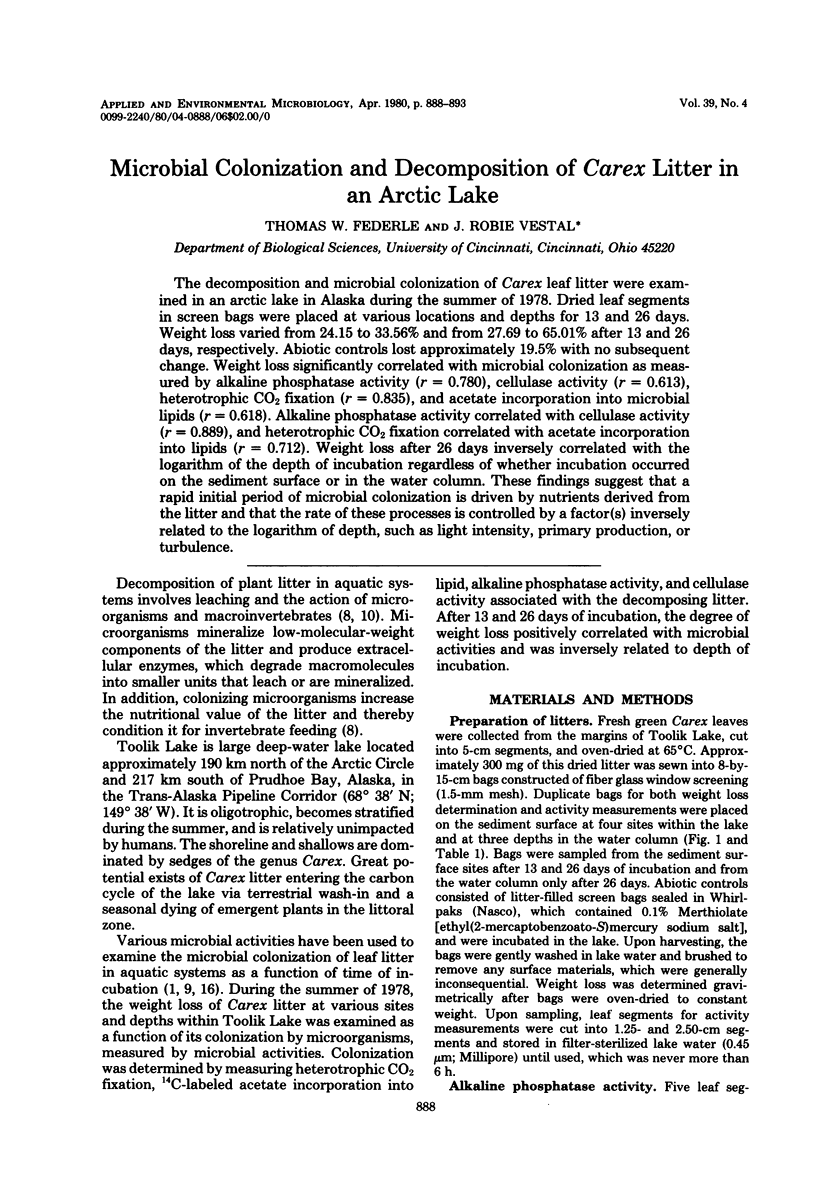
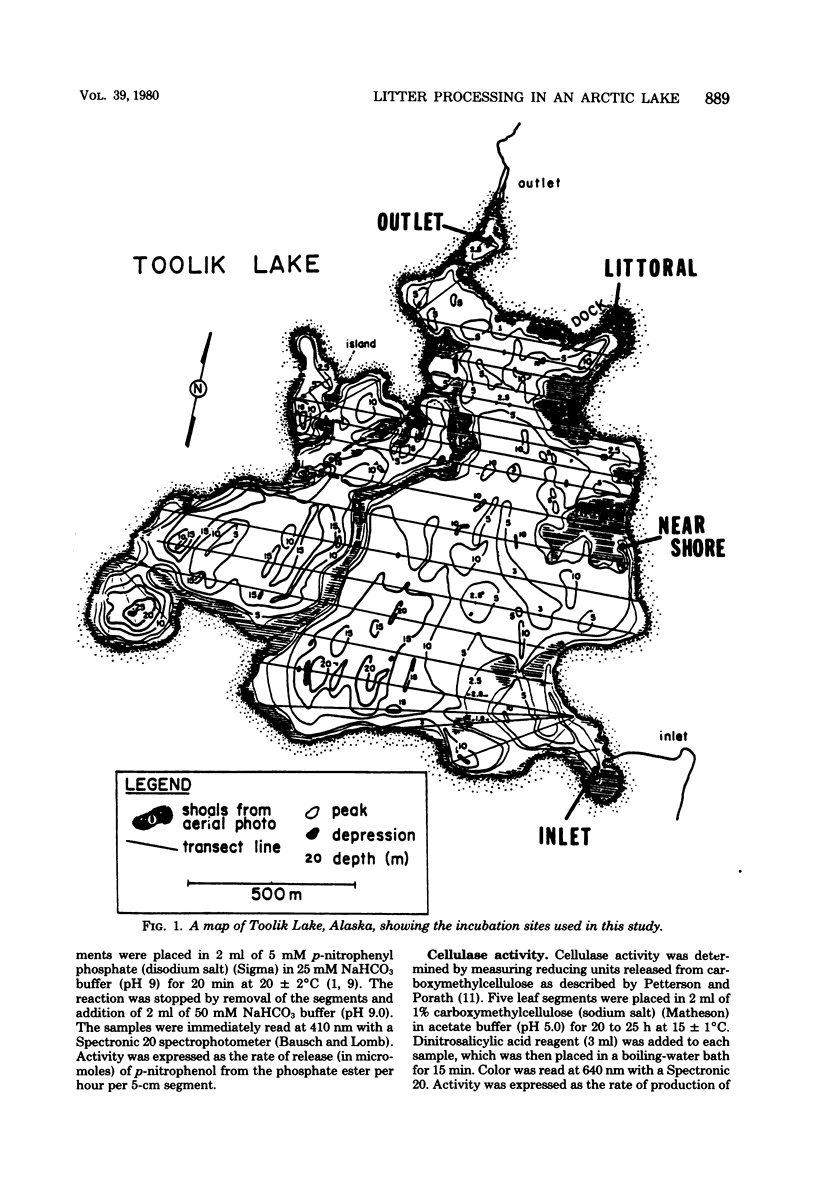
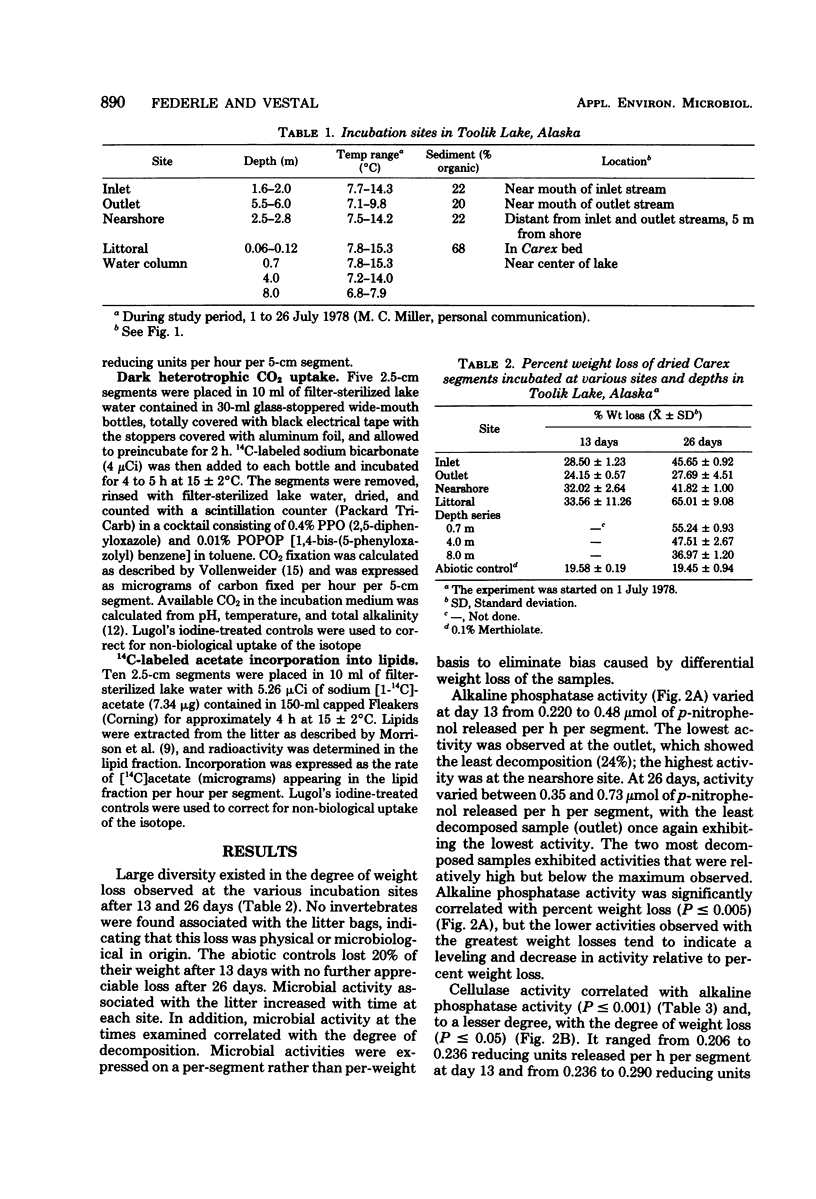
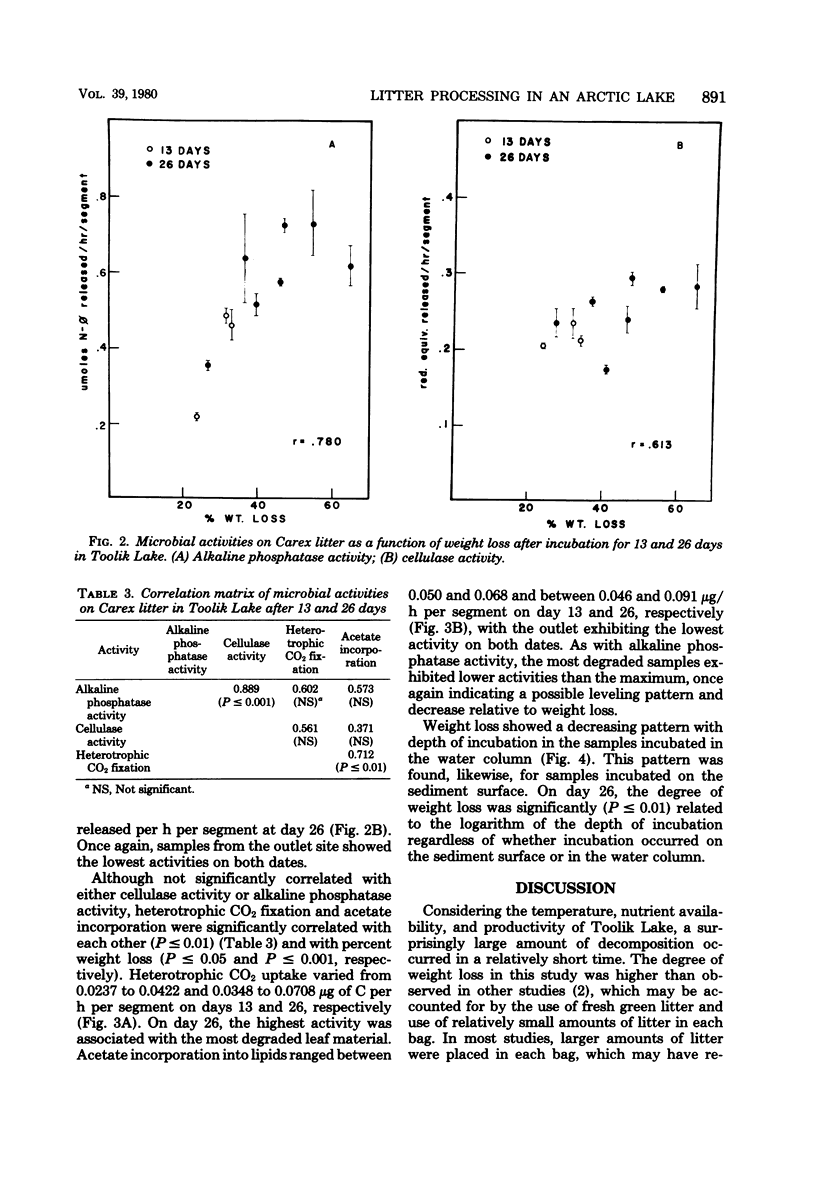
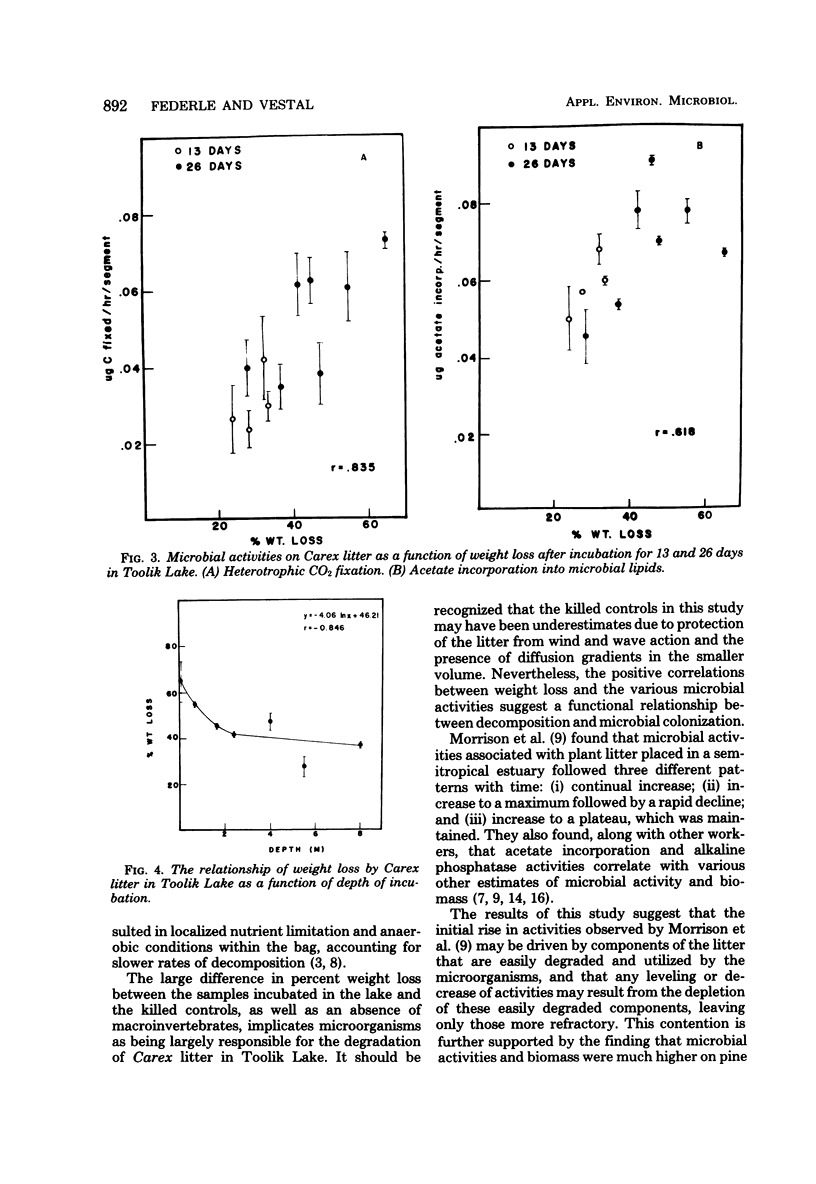
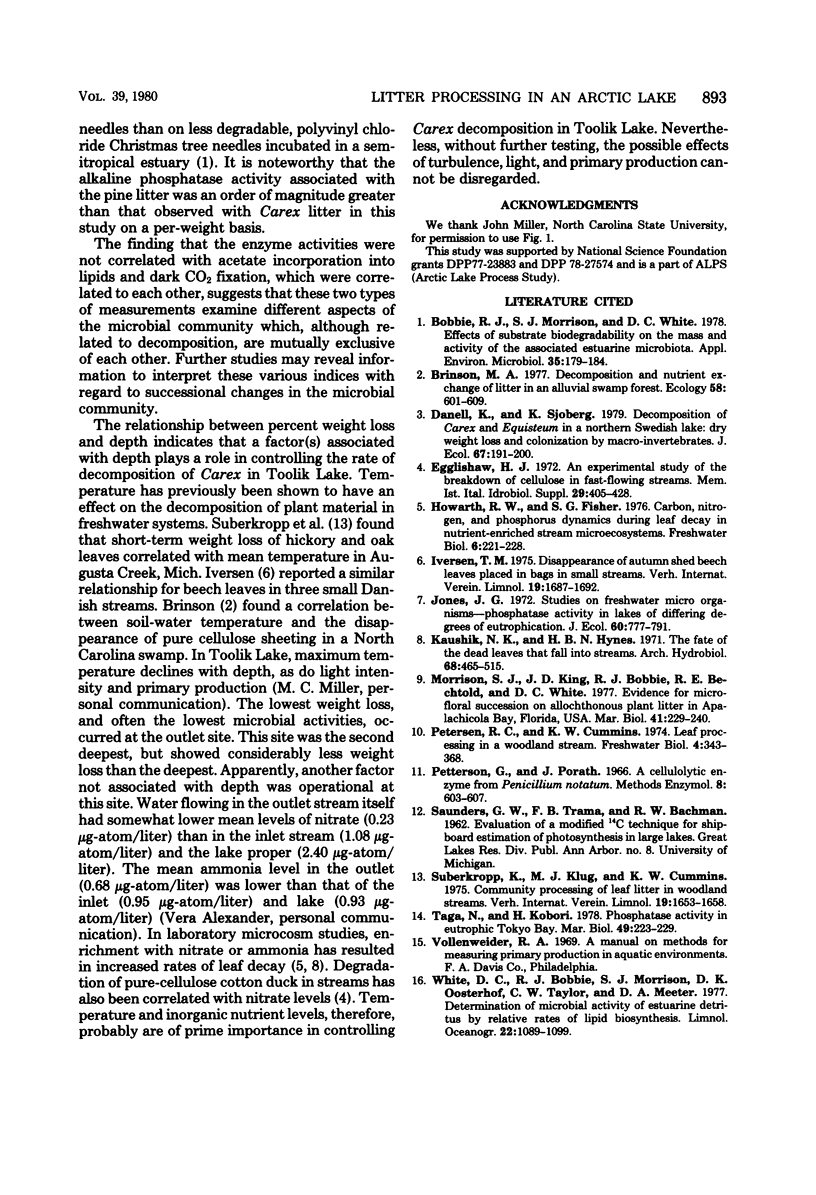
Selected References
These references are in PubMed. This may not be the complete list of references from this article.
- Bobbie R. J., Morrison S. J., White D. C. Effects of substrate biodegradability on the mass and activity of the associated estuarine microbiota. Appl Environ Microbiol. 1978 Jan;35(1):179–184. doi: 10.1128/aem.35.1.179-184.1978. [DOI] [PMC free article] [PubMed] [Google Scholar]


